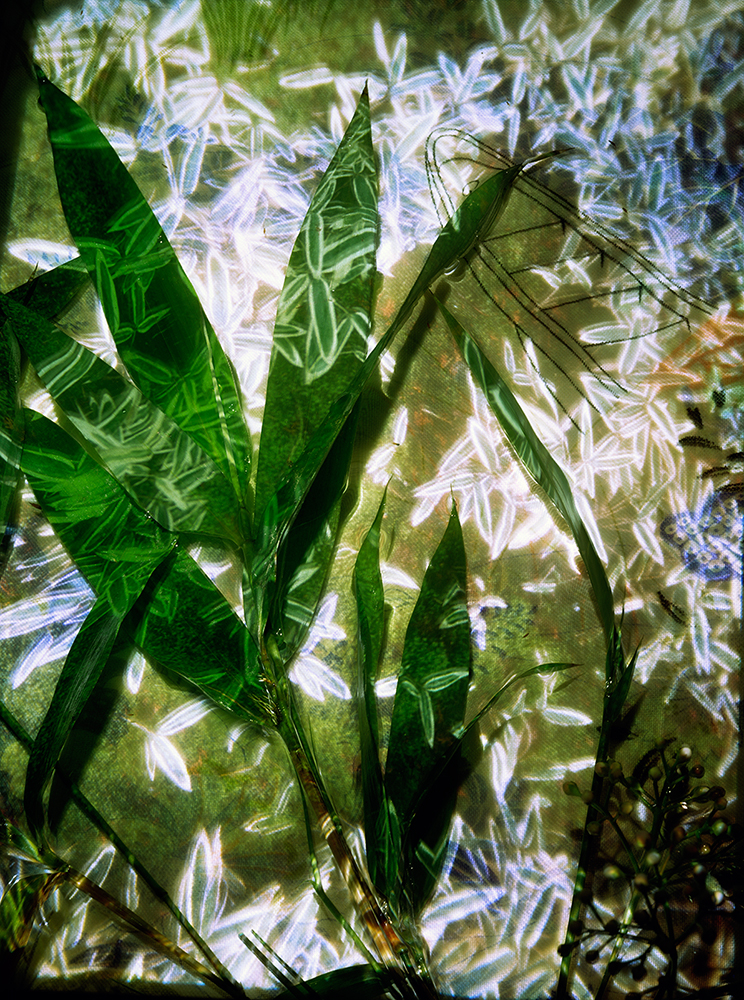Weeping Cherry
44 x 55 inches
Temporal Screens (2003 - 2005)
In the spring of 2003, I received a Japan Foundation Grant to live and photograph in Kyoto. My interest in Japan stemmed from the body of photographs I was working on at the time; I was exploring the complex relationship between the natural and human environment in preservationist parks in Costa Rica and a restorationist park in southern California (Constructed Landscapes).
My interest in Japan is focused on two aspects of the Japanese landscape; the profound aesthetic difference in the design of the landscape and the scale of the time span that is represented in temple and private gardens. The historic gardens of Kyoto represent a relationship between humans and nature that is so enduring that it is not possible to find anything in the United States that approaches it. As a first time visitor to Japan, I was interested to see the result of centuries of artistic interaction with the landscape.
In contrast to the “wilderness” landscapes I had been using as a basis of my photographs, each component of the Japanese landscapes contained a nuanced meaning. Exemplifying a profound aesthetic difference in design, this sense of order was present in Kyoto’s public spaces as well, including the greenway along the Kamo-gawa River, and rice paddies on the northern edge of the city.
Similar to my methodology in other residencies, I made photographs using specimens placed in a still life immediately after collection. I collected small pieces of vegetation, antique kimono fabric, and other artifacts, illuminated them with projected slides I had previously taken, and then rephotographed the assemblage using a view camera.
Arashiyama
63 x 44
Daitokoji Perimeter
61 x 44 inches
Pine-Cherry Blossoms
60 x 28 inches
Rice Paddy
44 x 70 inches
Dry Garden
56 x 44 inches
Heian-Jingu
44 x 44 inches
Bamboo Crane
58 x 44inches
Along the Kamo-Gawa
44 x 61 inches
Pine Tree and Pollen
36 x 67.5 inches



